Through the Years
I got possessed one night and decided to build a page listing all the musical instruments (electric AND acoustic) I have had through the years. It brought back a lot of interesting memories and occasional frustration (a bit of memory recall issues!).
This is in approximante chronological order but I can’t remember exactly all of the details despite the fact that owning a keyboard was always a big deal and special for me!
Keyboards (Synths and Pianos)
- 2021 update -
Casio Digital Piano
Before moving up to the Hartford area, I wisely but sadly sold my Steinway upright—a trusty stalwart of mine for many decades. In April 2021, I bought a Casio PX-S3000 Digital Piano—a phenomenal instrument both in sound quality and "play-ability."

Wurlitzer Console
I got this I believe the summer before my first year of college. I had my eye on a Rhodes but was happy to start with a Wurly. I had this thru most of my college years (once I lived off campus).
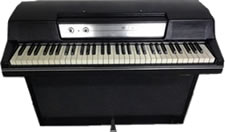
Homegrown Modules
I had the opportunity to learn the basics of synths on an old EML-100 while in college (photo). Subsequently, a synth class was formed, taught by a local synth hound. He had an old Putney VC3 - photo !
I was hooked and ended up having him build for me a custom rack of modules which I placed on top of my Wurlitizer electric piano for the occasional gig. While not playing the bone, I was the mad professor in the back generating weird swishes and gurgling sounds with the sample and hold patched into all kinds of processers.
[There's a photo somewhere - just gotta locate it...]
Hohner D6 Clavinet
Yep—I really had one of these. Loved it but I sure wasn’t as funky as Stevie Wonder. While in Ithaca, I was "Bone and Clav man" for the Bernie Milton Band for a while…
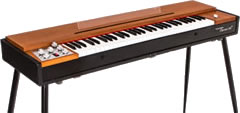
Fender Rhodes Suitcase Piano
I bought this new once I moved to Boston (of course, I got my van towed at Manny’s in NYC when I bought it but that’s a whole 'nother crazy story…). What a gem! Playing the chord changes on Herbie Hancock’s Maiden Voyage with the stereo tremolo was like an orgasm!
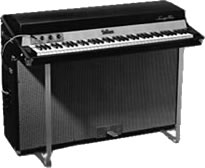
Fender Rhodes Stage Piano
At some point I sold the Rhodes Suitcase and bought this Stage version second hand. Much later, once I moved to Manhattan, I rebuilt the entire case with thinner plywood so I could actually carry it with one hand. As part of my rebuild, I built a flat top to replace the curved plastic top and brought it to gigs (a Poly Six rested on top!). I wish I had never sold it—it had such character!
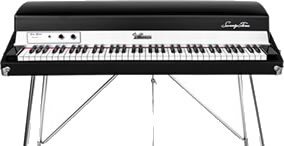
Korg Poly Six
My first synth! It was thinner sounding than some of the others on the market at the time but it sounded good and most importantly - it was all I could afford!
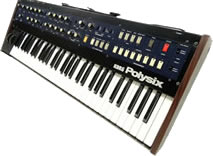
Mini Moog
Ah... what can I say? Until this day, there is absolutely nothing that sounded better. Plus it had such expressiveness despite not having aftertouch on the keyboard. I got it second hand at Rogue Music in NYC. I absolutely adored this baby. Monster bass sound, serious leads and the pitch bend wheel made me feel like George Duke! [I was a legend in my own mind ![]() ] Very stupidly, I sold it and still regret it.
] Very stupidly, I sold it and still regret it.
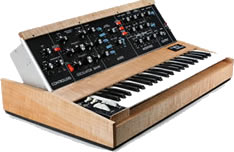
Roland D-50
Buying this turned out to be one of my wiser investments. I still have it and consider it my main keyboard, The sounds are warm and expressive and cover a lot of tonal ground. As a matter of fact too much! I finally found a D-550 (at the end of 2016) to give me the palette of two of these for my recordings (the D-550 is basically the D-50 without the keyboard).

Oberheim Matrix Six
Fat sound—the warmth of analog and a powerhouse for screaming synth leads. I enjoyed this synth a lot—it replaced the Poly Six for many a gig. Aftertouch was so sweet when you played a monster brass pad on this! The bass patches (which I tweaked) could be deep and nasty! ![]()
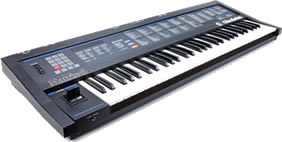
Yamaha DX-7
Oh yeah... FM synthesis—it was quite the rage in the 80s. I got one and used it to replace the Rhodes on gigs. It has a icy sheen to its sound but coupled with the Oberheim, it gave a lot of percussive snap to complement the Oberheim's fatness. I was never enamored with the sound of FM synthesis and was happy to sell it after a few years of use.
EXAMPLE: DX7 and OB Matrix 6 combination
Misty Nights In The City

Casio CZ-101
Yep—this little guy packed a wallop. I got fairly good at programming it and to this day it had the best sounding flute you could imagine. In the right context, some of its unique sounds (created with Phase Distortion synthesis) really worked great. The mini keys were a bit of a pain to play but I would occasionally bring to gigs for fun. Sadly, it finally broke beyond repair and ended up in the trash.
EXAMPLE: CZ-101 Flute
Child's Play

Yamaha DX100
Yep—this little guy was also kinda fun. It had a wind controller (a mouthpiece) which you could blow into to change the attack on a note. It had mini keys and a strap and it was a fun to take it along on trips to play, practice or compose: see photo. I think in the long run, it was more useful than the DX-7!

Drum Machines
Roland TR-606
This was a fun little machine—it sounded cheesy (of course much later those cheesy sounds became in the vogue) but it was easy to work with and—in its own unique way—could set a nice groove.
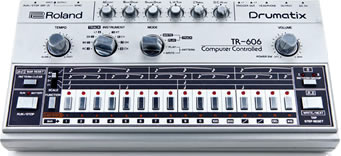
Yamaha RX-7
I later graduated to the Yamaha. It was much beefier (the kick drum and snare really sounded like a kick drum and snare!)
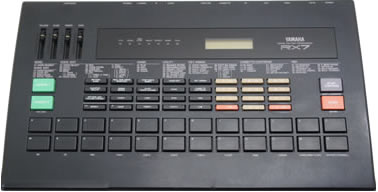
Alesis HR-16 (and the MMT8)
This was last drum machine I purchased (and still have). Not quite as heavy a sound as the Yamaha—never the less—it’s lighter sound seemed more conducive to jazz and samba which was what I was into at the time so it suited me fine. The companion MMT-8 was a sequencer that worked the same way. I sequenced a lot of Brazilian choros on this dual setup and played along on the trombone—that was a workout!
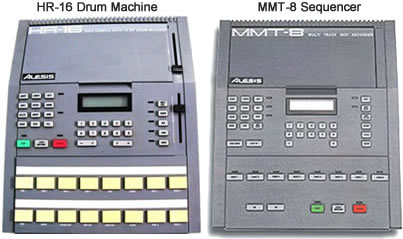
I also had a rack mounted DataDisk, which saved the sequences on floppy disks. One day the DataDisk didn’t work at all. I felt something sticky where the floppy was inserted. My crazy son (he was quite young at the time) had decided to push applesauce inside! Cost me a pretty penny to get it repaired. :-(
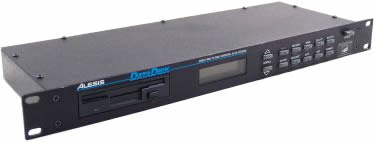
Rack Modules
- 2023 update -
Roland JV-1080
Back in October 2023, I purchased this used on Reverb.com. Its an amazing sounding multi-timbral synth. Many patches from the JV-880 are replicated here but the there are numerous sci-fi and other hard-edge sounds unique to this module. Much more sonic exploring to come! ![]()
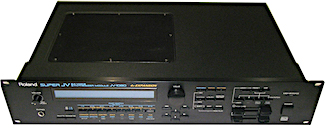
Oberheim Matrix 1000
I loved the OB Matrix Six so this was a logical choice to snap up when it came on the market. A single space rack mount that is still in use (primarily for bass).

Yamaha TX802
I got this unit ages ago and thought I’d really get a lot out of it being multi-channel MIDI double space rack but I don’t use it. FM synthesis is really not needed since I have the JV-880 (see below).

Roland MKS-20
This is a beauty and one of my favorite modules. These are hard to find but I was lucky enough to snatch it up second hand a long time ago. What makes it so special? Roland's Structured / Adaptive Synthesis makes it play and sound like a real Rhodes or a real vibraphone and even the acoustic piano was top notch. Suddenly I was comping Herbie Hancock’s Maiden Voyage with an authentic tremolo and once again reaching nirvana! Being a very deep double space rack mount, this module is huge and heavy as hell and—although I had bought a Calzone road case for it and brought it on a few gigs—it stays home now and will always be a key component of the studio.
Structured / Adaptive Synthesis - Details
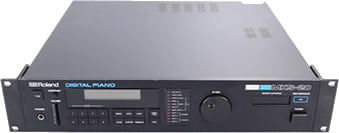
Alesis Nano Piano
Being addicted to a decent electric piano sound when doing cocktail sets and realizing carrying the “multi-ton” MKS-20 to gigs was getting stupid, I bought this little unit. It is only a half space rack mount so it's super portable for the road. A lot of the patches (sounds choices) are nice but unfortunately to me useless (piano/string overlay combos) but there are a couple of Rhodes, Wurly and Acoustic sounds that sound decent live.
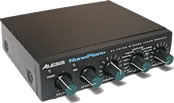
Roland JV-880
Anther great investment, this single space rack mount has been the backbone of all my recordings since I purchased it brand new close to the time it first came out. Multi-channel MIDI allows it to truly be an orchestra (or complete rock band). The drums are great, the acoustic guitar is phenomenal and the basses sound very good. Lots of wild “crystalline” pads and a wide array of string ensembles are very nice, although rarely used in comparison to the drums and acoustic guitar. The stock pseudo brass sounds aren’t my “cup of tea" but many sound pretty good when mixed with live trombone.

Roland D-550
What can I say? Being in love with the D-50 keyboard version for ages and having the jones for this for so long—I am a happy man! I just got it (Late 2016) and will be incorporating it into the studio set up and using it on recordings shortly. Its a double space rack mount, as big (but not seemingly as heavy) as the MKS-20 but it’s for the studio (of course!).
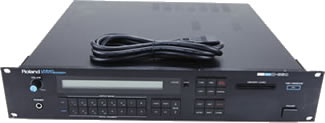
Roland M-SE1
I hadn’t ever heard of this until I started online research of something to supplement my D-50. Found it used on the web at a great price (it’s pretty obscure and really billed as a String Ensemble). Needless to say it sounds great and plans are to write and record a lot of string arrangements to really make efficient use of it.

Assorted Recorders, Flutes and Baroque Woodwinds
The "Menagerie"
I learned the recorder at an early age—my parents were avid recorder players and played in an authentic Baroque Ensemble (photo). Subsequently I picked up the flute because the fingerings are similar. In my high school days, I was a Jethro Tull fan and I learned some of Ian Anderson's rock tricks.* Over the years, when traveling I often picked up a local wooden flute—most are merely tourist items but all are playable. When my Dad passed away and my Mom moved into assisted living, I inherited a few recorders from their vast collection.
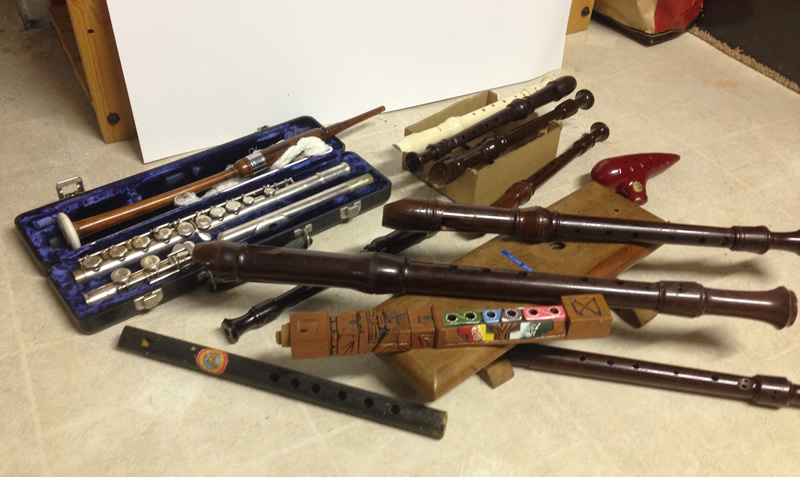
* My mastery from Ian Anderson's Bag of Flute Tricks (1) singing and playing at the same time, (2) the classic E-G Em trill, and most importantly: (3) standing on one leg while playing!…
Brass
Baritone
I wanted to play the trombone in 4th grade when the instrumental music program in my hometown school started. I was a puny little kid. The music instructor took a look at me and said: "Sorry you better start on the baritone horn, your arms aren’t long enough to play the trombone!" So I played the baritone for at least two years. Being a puny kid, it was a struggle to carry the baritone around in its bulky case but it gave me the opportunity to learn the valves which I have never forgotten.
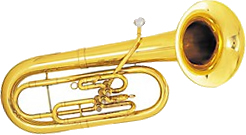
Holton G-trigger Trombone
I was still a shrimp in junior high (photo) so I was given the special opportunity to use the Holton G-attachment trombone. This was a unique trombone designed especially for kids with short arms. When you used the trigger attachment, there were a special set of 6th positions—rather than the standard seven.

Conn 88-H Trombone
A few years later—when I got this professional trombone—I had to relearn all the trigger positions since the 88-H has the standard F attachment (rather than the G). But this was a helluva a great horn! Red brass and considered one of the best trombones of the day (Bach was just beginning to ascend—Conn was still on top!), I spent years with this, playing in brass quintets and jazz and Brazilian groups as well as big bands while in Boston and NYC. Stupidly, I sold the horn in my long lean years while living on Manhattan’s Upper West Side! ![]() It would be really handy to have now to play all the low parts in my arrangements—I miss the F attachment!
It would be really handy to have now to play all the low parts in my arrangements—I miss the F attachment!

Yamaha YSL
I had bought this smaller bore bone because I was playing latin and jazz gigs and it really was more appropriate (the 88-H was too dark and mellow). This was a higher-end student horn and—as I got to be a better player—started to realize it shortcomings (brittle when playing loud, a little stuffy in the upper register).

Conn 6-H Trombone
Some fellow trombonists and repairman recommended I look for a old Conn 6H—that was the type of sound I was seeking. Sure enough, a fellow trombonist had one for sale and I instantly fell in love with the horn. It had the edge for both jazz and latin, it was rounded and easy to play from top to bottom. This was a gem!
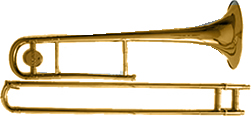
A Funky Ol' Baritone
Despite being in self-inflicted poverty while living on Manhattan's Upper West Side, I saw this Baritone in a pawn shop and had to have it!. It’s ancient and has some intonation problems on certain valve combinations but I actually did a few marching gigs with it and it’s fun to play the valves. It hangs on the wall in my studio and I take it out to play sometimes to entertain myself or any curious visitors.
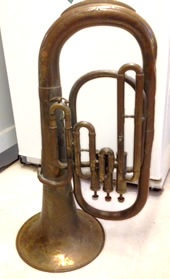
Blessing B-8 Trombone
The 6-H got to a point of being too beat up to repair so my repairman said "I know someone with the New York Opera who might have a horn you like." Everybody those days seemed to be playing either a Bach (too dark and pricey for me) or a King (I wasn’t ready to step that far way from the Conn mellowness) and I had very specific tastes. Sure enough a Blessing—really a cheaper spin-off of the older Conn line—was the perfect horn for me. My NYC Opera contact recommended getting a few customized options which I did and Blessing truly built a great professional horn. It had the edge but not too much!

Alto pBone
Oh yeah… I almost forgot! I bought an Alto pBone a couple of years ago. The pBones are plastic and of course a little stuffy and are no way equivalent to a professional brass version but they are surprisingly playable and super cheap! I hope to be using this on some trombone ensemble arrangements I have written and plan on recording (someday!).

Native American Flute
2018 - I now play, record and perform on the Native American Flute as well. Its a lovely sounding instrument and a joy to play.
I first recorded on a souvenir flute I had in my ethnic instrument collection...

...then bought a professional High Spirits Flute in G minor. It is gorgeous!

In the summer of 2019, I added a Pocket flute in G minor....

In the late fall of 2019, I added
(1) a Bass flute in D minor; and

(2) a Red Cedar version of my G minor flute listed above...
